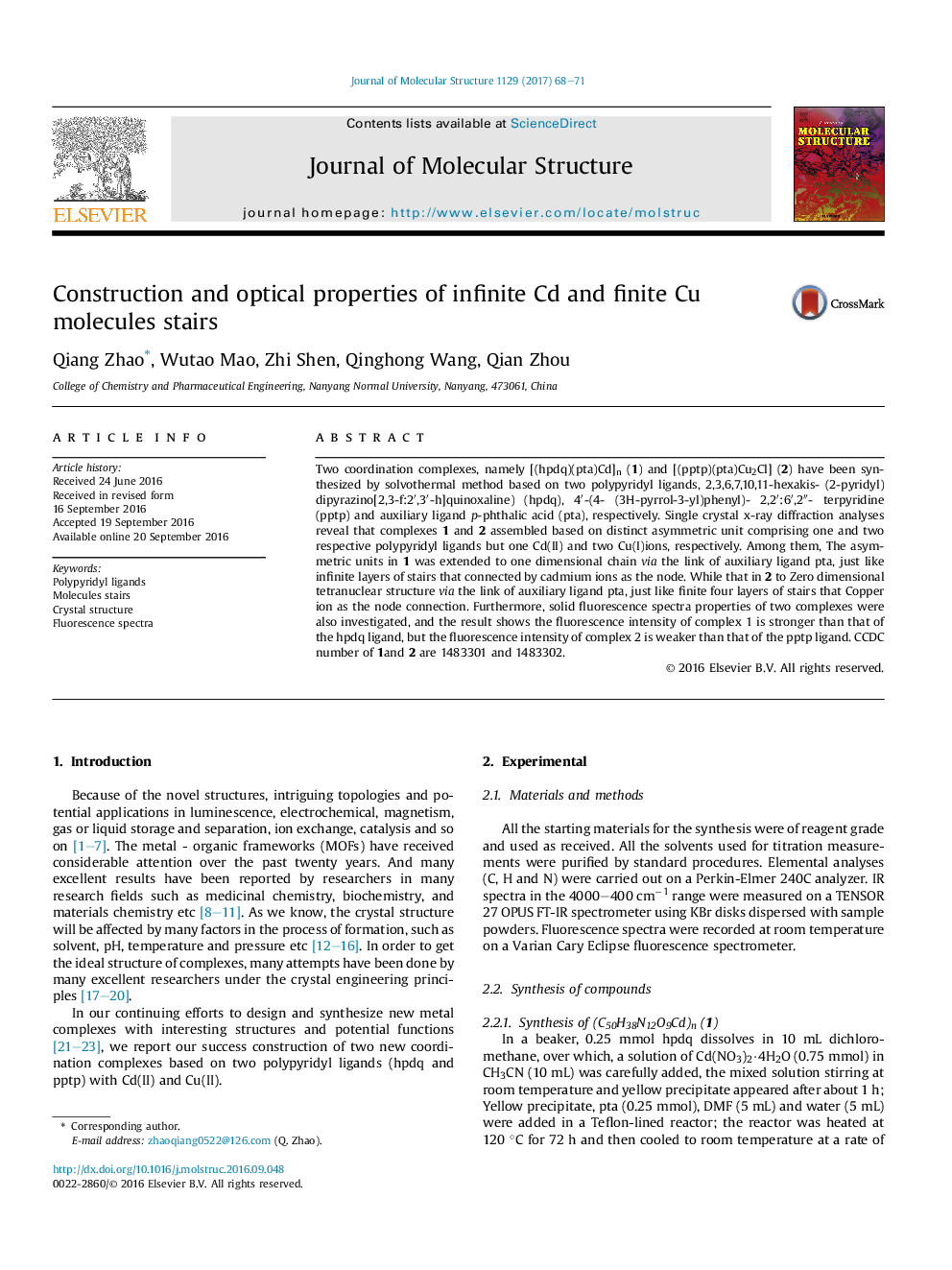| Article ID | Journal | Published Year | Pages | File Type |
|---|---|---|---|---|
| 5161174 | Journal of Molecular Structure | 2017 | 4 Pages |
Abstract
Two coordination complexes, namely [(hpdq)(pta)Cd]n (1) and [(pptp)(pta)Cu2Cl] (2) have been synthesized by solvothermal method based on two polypyridyl ligands, 2,3,6,7,10,11-hexakis- (2-pyridyl)dipyrazino[2,3-f:2â²,3â²-h]quinoxaline) (hpdq), 4â²-(4- (3H-pyrrol-3-yl)phenyl)- 2,2â²:6â²,2â³- terpyridine (pptp) and auxiliary ligand p-phthalic acid (pta), respectively. Single crystal x-ray diffraction analyses reveal that complexes 1 and 2 assembled based on distinct asymmetric unit comprising one and two respective polypyridyl ligands but one Cd(II) and two Cu(I)ions, respectively. Among them, The asymmetric units in 1 was extended to one dimensional chain via the link of auxiliary ligand pta, just like infinite layers of stairs that connected by cadmium ions as the node. While that in 2 to Zero dimensional tetranuclear structure via the link of auxiliary ligand pta, just like finite four layers of stairs that Copper ion as the node connection. Furthermore, solid fluorescence spectra properties of two complexes were also investigated, and the result shows the fluorescence intensity of complex 1 is stronger than that of the hpdq ligand, but the fluorescence intensity of complex 2 is weaker than that of the pptp ligand. CCDC number of 1and 2 are 1483301 and 1483302.
Related Topics
Physical Sciences and Engineering
Chemistry
Organic Chemistry
Authors
Qiang Zhao, Wutao Mao, Zhi Shen, Qinghong Wang, Qian Zhou,
